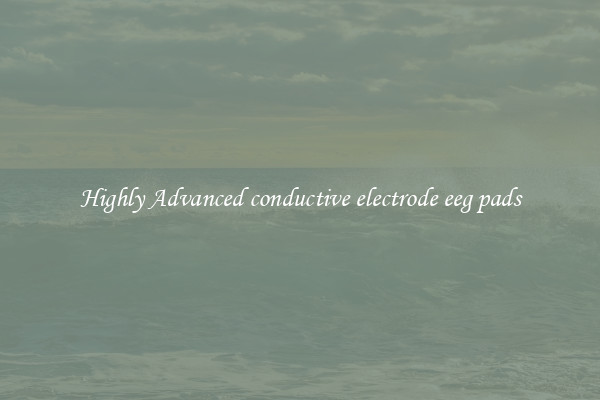Highly Advanced conductive electrode eeg pads
Highly Advanced Conductive Electrode EEG Pads: Revolutionizing Brainwave Monitoring

In recent years, the field of neuroscience has seen tremendous advancements in technology that have revolutionized the way we monitor brain activity. One such groundbreaking innovation is the development of highly advanced conductive electrode EEG pads. These pads are used in electroencephalography (EEG) tests to detect electrical activity in the brain and are a crucial tool for diagnosing neurological disorders, studying brain function, and monitoring patients during surgery.
Traditional EEG pads are typically made of metal or silver-coated electrodes that require conductive gel to make good contact with the scalp. While effective in capturing brainwave signals, these traditional pads can be messy, time-consuming to set up, and uncomfortable for patients. Additionally, the gel used with these electrodes can dry out during long monitoring sessions, leading to poor signal quality.
Highly advanced conductive electrode EEG pads address these drawbacks by utilizing innovative materials and technology to provide a more seamless and efficient brainwave monitoring experience. These pads are made from soft and flexible materials that conform to the shape of the scalp, providing a comfortable and secure fit for the patient. They also eliminate the need for conductive gel, making the setup process quicker and more convenient.
One key feature of these advanced EEG pads is their enhanced conductivity, which ensures a reliable and consistent signal quality throughout the monitoring session. This improved conductivity is achieved through the use of specialized materials that efficiently conduct electrical impulses from the scalp to the EEG machine, resulting in more accurate and detailed brainwave data.
Another advantage of highly advanced conductive electrode EEG pads is their durability and longevity. Traditional metal or silver electrodes can degrade over time, leading to signal degradation and the need for frequent replacements. In contrast, the materials used in these advanced pads are designed to withstand continuous use and maintain their conductivity over extended periods, reducing the need for frequent replacements and ensuring reliable performance.
Furthermore, these advanced EEG pads are compatible with a variety of EEG machines and software systems, making them a versatile and cost-effective option for healthcare facilities and research institutions looking to upgrade their brainwave monitoring capabilities.
Overall, highly advanced conductive electrode EEG pads represent a significant step forward in the field of neuroscience, offering a more comfortable, efficient, and reliable solution for monitoring brain activity. As technology continues to advance, we can expect further innovations in brainwave monitoring that will continue to push the boundaries of what is possible in understanding the complex workings of the human brain.

View details

View details

View details

View details








